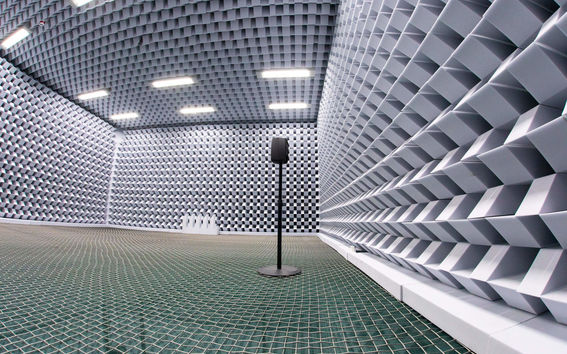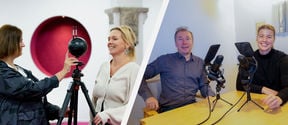The human ear detects half a millisecond delay in sound

Hearing is one of the most sensitive of our senses, and even small issues in sound quality can interfere with listening experiences.
Acoustics researchers at Aalto University, in collaboration with professional monitoring loudspeaker manufacturer Genelec, have investigated just how small of a variation in sound delay the human ear can detect in the most sensitive frequency range for hearing. People normally hear sound in the range of 20 and 20,000 hertz.
What makes this study unique is that the researchers studied not only the effect of delays, but also how listeners perceive a negative delay in a range of frequencies. In practice, this means that researchers could determine how sensitively a person hears a sound event in a particular frequency range when it arrives before another sound.
The negative delay, adjusted in fractions of a thousandth of a second, was produced by filters that shift audio selectively at certain frequencies to a different point in time without affecting the magnitude of sound.
‘The frequency-selective, time-reverse filtering technique we use is novel technology in the field of digital signal processing. To achieve a negative delay, we need to move into the future. This phenomenon was produced with software that acts – in a manner of speaking – as a time machine,’ explains Juho Liski, postdoctoral researcher in Aalto University.
Millisecond latency matters
In the listening experiment, twelve subjects listened to processed and unprocessed sound, and the researchers studied whether participants were able to reliably distinguish between them. The sounds easiest to identify were a castanet, a percussion instrument, and short clicks.
‘The audibility of the level variation of a loudspeaker across frequencies is well known, but the audibility of the group delay variation has been less studied. Variation in the group delay results in certain frequency ranges moving forward or backward in time compared to other frequencies,’ says Aalto University Professor Vesa Välimäki.
Researchers recognise that audio is delayed as a function of frequency as it passes through a loudspeaker, but questions have remained on how audible the resulting delay variations in audio are at different frequencies.
‘The study shows that people can hear differences when audio starts at certain frequencies ahead of time. A half of a millisecond delay in certain frequencies relative to others was also audible. The amount of delay needed to exceed the detection threshold varies considerably at different frequencies, but delays were especially heard when sounds started or stopped,’ Välimäki and Liski say when discussing the results.
The development of digital signal processing has enabled very precise sound processing, opening new possibilities for acoustics research and development.
‘The main goal for our development work is to reproduce complete audio that has been recorded, but nothing extra. It is vital that loudspeakers can create a precise stereo sound stage and reproducing time-accurate sound is a central part of this. Research collaboration with Aalto University deepens our understanding of the accuracy requirements needed to design loudspeakers. We are interested in the limit beyond which a person can no longer perceive improvements when the time precision in reproduced sound improves,’ says Aki Mäkivirta, Genelec's R&D director.
The results of the study have been published in the industry-leading IEEE / ACM Transactions on Audio, Speech, and Language Processing. You can read the Open Access article from this link
Perceiving auditory delays has been studied at the Aalto University Acoustics Laboratory in recent years in the IMPRESS and IMPRESS2 projects funded by Genelec.
Further information:
Juho Liski
Postdoctoral Researcher, Aalto University, Department of Signal Processing and Acoustics
[email protected]
+ 358 40 547 5560
Vesa Välimäki
Professor, Aalto University, Department of Signal Processing and Acoustics
[email protected]
+ 358 50 569 1176
Aki Mäkivirta
R & D Director, Genelec
[email protected]
+ 358 50 553 5915
- Published:
- Updated:
Read more news

Aalto Open Science Award ceremony brought together Aaltonians to discuss open science
Last week we gathered at A Grid to celebrate the awardees of the Aalto Open Science Award 2023 and discuss open science matters with the Aalto community.
Seed funding available to boost collaboration between Aalto, KU Leuven and University of Helsinki
Aalto University, KU Leuven and the University of Helsinki launch the 2nd exploratory seed funding call to explore research collaboration possibilities. The funding call is open until 10 September 2024.
Workshop day for teachers: 360° environments and podcasts
On Tuesday 4.6. a workshop day consisting of 360° environment creation and podcast production provides a way to get to know these media in practice. Feel free to join both workshops or one of them according to your time and interest.